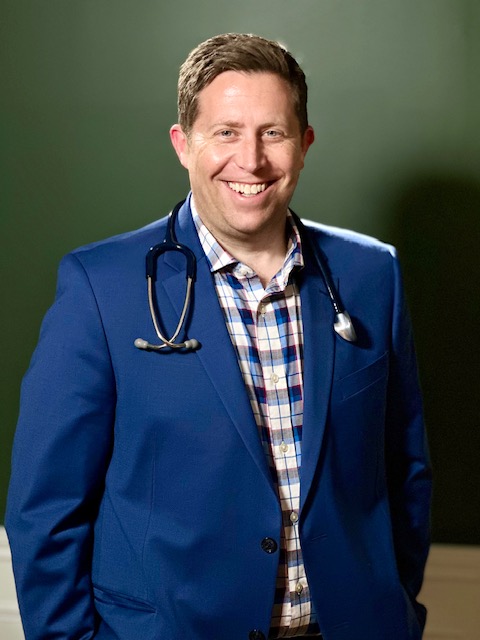A Hamilton, Ont., clinic boasting short wait times for primary care and charging patients straight away insists its model underscores a great need for health services in the community.
Holistic Solutions NP in Ancaster has been operating for roughly a month now, using nurse practitioners (NP) who have training to diagnose and prescribe for simple illnesses and know-how to tackle advanced needs like ordering and interpreting laboratory tests.
However, the entity isn’t billing its clients the traditional way, through the Ontario Health Insurance Plan (OHIP), due to an apparent ill-defined area around Canada’s publicly-funded health insurance policy.
Clinic lead Chris Savard is not sure he fully understands it but says OHIP is designed to allow physicians to bill through a system governed by the Canada Health Act which currently doesn’t have controls around nurse practitioners.
“Nurse practitioners weren’t included in that, so I think that’s the problem … there’s no mechanism for us to be able to bill the government,” he explained.
“That’s why other provinces are starting to update their policies to allow nurse practitioners to be able to provide those services, similar to midwives, physicians, optometrists, or physios.”

Chris Savard is the lead at Nurse Practitioner at a clinic in Ancaster Ont. offering Health services that bill clients outside of OHIP.
Global News
A 20-year health veteran who has been a nurse practitioner for 15 of those years, Savard says early on in his career he’s always wanted to be a part of an NP-led clinic and opted to get on with it since little movement has been made by government to offer more capacity.
The five on-site NPs are targeting some 5,000 Hamiltonians on a city waitlist for a family doctor with service prices ranging from $80 to treat a sore throat to $240 for a comprehensive mental health assessment.
“We just feel the need is so great,” Savard says. “This is a stopgap measure to help with the primary health care crisis.”
The province’s Ministry of Health has been recently making adjustments in health care policy to draw some pressure off of the strained hospital community.
It included a Jan. 2023 expansion that allowed pharmacists to prescribe treatments for 13 common conditions, including acid reflux, skin irritation, insect bites and sprains.
Last May, Ontario passed a health-reform bill that allows more private clinics to offer certain publicly-funded surgeries and procedures to draw some pressure off of the strained hospital community.
However, Bill 60 has been criticized by opposition parties and health-care workers who say the province should invest in hospitals to perform more surgeries rather than set up a new system.
Another step to ease pressures came in February when the ministry promised to provide $110 million to connect close to 300,000 people with primary care teams.
The idea is to hook up an estimated 1.3 million Ontarians who don’t have a primary care provider with doctors, registered and practical nurses, physiotherapists, social workers and nurse practitioners, among others.
About two dozen nurse practitioner-led clinics across Ontario are functioning as primary health care entities and are receiving legitimate funding from the province.
Michelle Acorn, chief executive of the Nurse Practitioners Association of Ontario, said changes in legislation have been authorizing nurse practitioners to operate independently and establish clinics, like Holistic Solutions.
However, she says “insufficient accessible funding” is likely the reason patients are running up against a price list in Ancaster and a few other small clinics across Ontario.
“This is for need and not greed for independent practice,” Acorn insisted.
“Most people don’t know … that practitioners are already employed full-time somewhere. They’re doing this extra to actually meet the community needs right now.“
But Natalie Mehra with the Ontario Health Coalition (OHC) suggests the practice goes against the spirit of the Health Act and says her group has seen an array of fees she characterizes as illegal “flood in” to the province.
Mehra is referring to a walk-in clinic in Ottawa that reportedly charges patients $400 a year for access and a similar nurse practitioner’s clinic in Toronto that’s offering packages for $1,200 a year that provide “unrushed appointments.”
Upon hearing the news, the Ministry of Health said in October it was investigating those claims.
Mehra said the OHC is not against nurse practitioner-led clinics but doesn’t believe patients should have to hand over a credit card to get service.
“Those services are covered under the Canada Health Act and … you can’t just change who provides a physician service … and then start to charge for it. That’s not how it works,” she explained.
“So the Ford government is responsible … and should there be any ambiguity, and I’m not saying that there is, but if there is they can close that.”
The Ontario College of Family Physicians (OCFP) predicts about 4 million, 1 in 4 people, in the province will not have a family doctor by 2026.
They say the number has been growing at a substantial rate moving from an estimated 1.8 million as of March of 2022, to 2.3 million in September 2022.
Adding to the crisis, another recent OCFP survey of family doctors shows nearly 65 per cent are planning to change or leave their practice due to overwhelming administrative work and a lack of support.
“Family doctors report spending 19 hours a week on administrative tasks,” the report stated last May.
“Ninety-four per cent said they are overwhelmed with administrative work that takes up to 40 per cent of their time every week.”
Savard, who is also a teacher with McMaster University’s nurse practitioner program, is already eyeing expansion for the clinic believing the outlet could face some 3,200 patients over the next two years needing services.
As for the prospect of getting a call from the province ordering a shutdown, he says he’s not convinced it would be legal.
“I don’t know what will happen,” Savard speculated.
“I would rather that the ministry say ‘this is very innovative, why don’t we fund you’ …I think that would be a reaction I would hope for.”
Meanwhile, Mehra says the OHC is seeking dialogue with Ontario Health Minister Sylvia Jones and Premier Doug Ford as well as seeking legal advice on what they can do to stop the “unnecessary billing.”
“We have a formal complaint ready to go and I’m just working with some lawyers to get our legal option ready to go,” Mehra explained.
— with files from the Canadian Press, Isaac Callan and Colin D’Mello
 Asian Tribune Your Multilingual Newspaper covering World and local news News
Asian Tribune Your Multilingual Newspaper covering World and local news News


